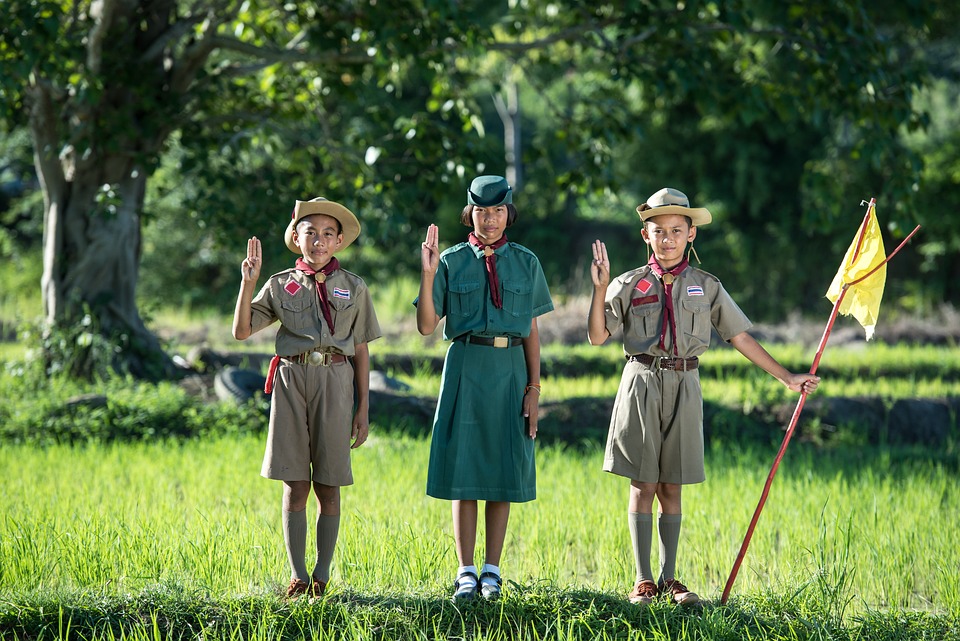Table of Contents
Introduction
Are you a fan of adventure, wide-open spaces, and the rustic charm of the Wild West? If so, then cowboy camping might just be the perfect way for you to experience the great outdoors. Forget about fancy tents or luxury campsites – with cowboy camping, you can immerse yourself in nature and truly embrace the cowboy lifestyle. In this article, we will guide you through the basics of cowboy camping, helping you prepare for an unforgettable outdoor adventure.
Gear and Essentials
When it comes to cowboy camping, simplicity is key. Unlike traditional camping, cowboy camping primarily involves using minimal gear while relying on the natural environment for shelter. Here are some essential items to consider:
- A sleeping bag: Look for a lightweight and compact sleeping bag that suits the climate you will be camping in. Remember, you won’t have a tent to provide additional insulation.
- A ground pad or mattress: To ensure comfort while sleeping on the ground, invest in a good quality ground pad or an air mattress.
- A tarp or cowboy bedroll: While cowboy camping, you can use a tarp or a cowboy bedroll to provide some protection against the elements. Make sure it is made of durable and waterproof material.
- A cowboy hat: No cowboy camping experience would be complete without a classic cowboy hat to shield you from the sun.
- Proper clothing: Pack appropriate clothing for the weather conditions you will encounter. Opt for rugged and breathable fabrics that are suitable for outdoor activities.
- A headlamp or flashlight: Essential for navigating in the dark.
Choosing Your Campsite
The location you choose for cowboy camping can significantly impact your experience. Here are a few factors to consider when selecting a campsite:
- Level ground: Look for a flat and even surface to set up your sleeping area. This will ensure a more comfortable night’s sleep.
- Away from water sources: Though it may be tempting to camp near water, try to set up your site at least 200 feet away from any water source to prevent damage to natural habitats and avoid attracting unwanted wildlife.
- Protection from the elements: Look for natural features such as trees, rocks, or shrubs that can provide some shelter against wind and rain.
- Leave no trace: Remember to adhere to the principles of Leave No Trace camping by choosing a site that has already been used or disturbed, minimizing your impact on the environment.
Fire Safety and Cooking
When cowboy camping, you may opt to cook over an open fire or utilize a portable camping stove. It’s important to follow proper fire safety measures to prevent accidents and minimize environmental impact:
- Check local regulations: Before building a campfire, check with local authorities about any fire restrictions or bans in the area.
- Clear the area: Ensure there are no flammable materials, low-hanging branches, or grass near your chosen cooking spot.
- Use existing fire rings or pits: If available, utilize established fire rings or pits. Otherwise, create a fire pit by clearing away vegetation and surrounding rocks.
- Keep water nearby: Have a water source nearby to quickly extinguish the fire if needed.
- Never leave a fire unattended: Always fully extinguish the fire before leaving your campsite or going to sleep.
FAQs
Can I cowboy camp in any location?
While cowboy camping can be done in various locations, it’s essential to respect any restrictions or permits required in the area you plan to camp. Some public lands may have specific regulations regarding camping, so always research and follow the rules and guidelines for your chosen destination.
Is cowboy camping safe?
With proper planning and precautions, cowboy camping can be safe. However, it’s crucial to be aware of your surroundings, wildlife encounters, and weather conditions. Ensure you have the necessary survival skills and adequate gear to mitigate potential risks.
What about bugs and wildlife?
When cowboy camping, insects and wildlife can certainly be a concern. To minimize the impact, use bug repellents, keep food securely stored, and avoid attracting wildlife by not leaving any food scraps or waste around your campsite.
How can I stay warm during the night?
Since you won’t have the protection of a tent, staying warm during the night can be a challenge. Invest in a high-quality sleeping bag suited for the expected temperatures, and consider using additional insulation like a ground pad or an air mattress. Dress in layers and wear a warm hat to retain body heat.
What if it rains?
If rain is in the forecast, ensure you have a waterproof tarp or cowboy bedroll to provide shelter. Choosing a campsite with natural features that offer some protection can also help keep you dry. However, it’s always advisable to check the weather forecast and be prepared for unexpected changes.
How can I minimize my impact on the environment?
To minimize your impact while cowboy camping, follow the principles of Leave No Trace. This includes properly disposing of waste, not disturbing natural habitats, and avoiding excessive noise pollution. Always leave your campsite as you found it, or even better.




